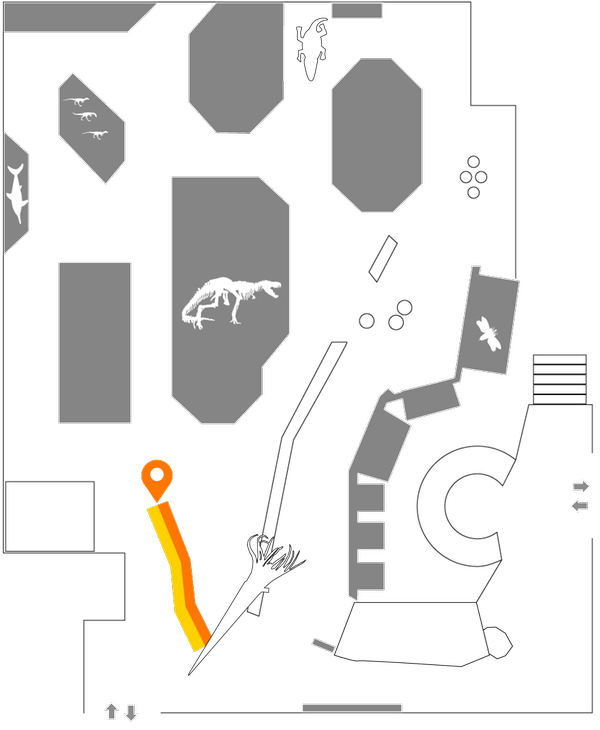Ediacaran
635-541 million years ago
The first multicellular animals now appears. Toward the end of the period, there also appears small worm-like creatures – were the first animals that could move by themselves. Biological diversity is very limited , scientists have only discovered around 100 different species.
This is where you'll find the Ediacaran period when you are in the exhibition.
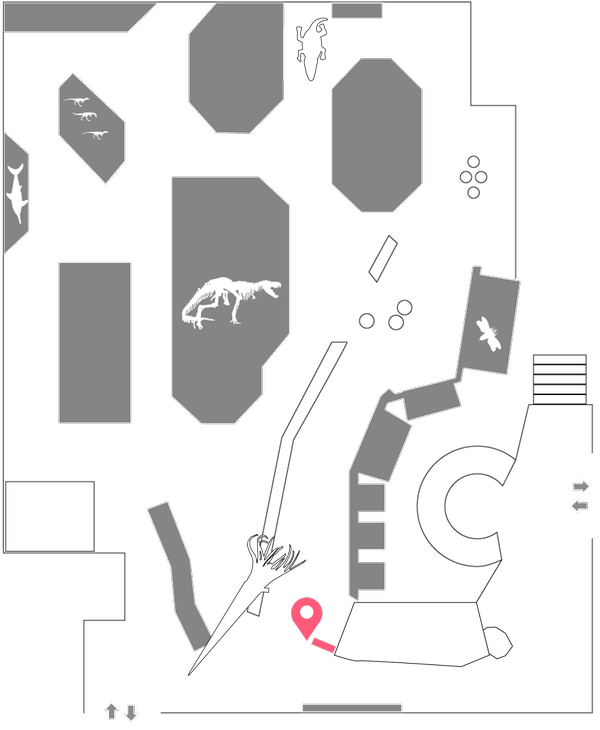
Cambrian
541-485 million years ago
Biological diversity increases dramatically and the chordate animals, ancestors of the vertebrates, sees the light of day. New organs such as eyes, antennae and legs also evolves for the first time. Animals develop protections, as shells, and methods for protection, such as burying themselves. They move, hunt and live in packs.
This is where you'll find the Cambrian period when you are in the exhibition.
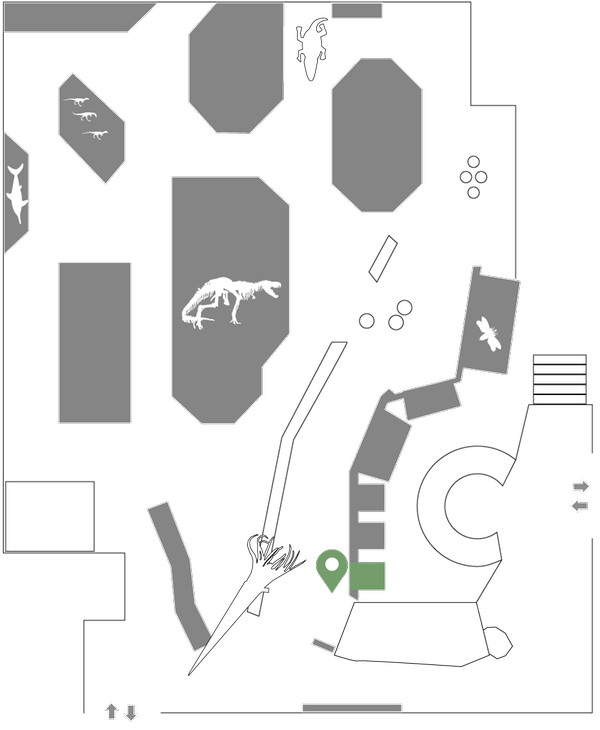
Ordovician
485-443 million years ago
Animals with skeletons of bone appear for the first time. They comprised a group of fish that had round mouths but no jaws, and were related to the hagfish and lampreys of today. The first plants on land begin to evolve.
This is where you'll find the Ordovician period when you are in the exhibition.
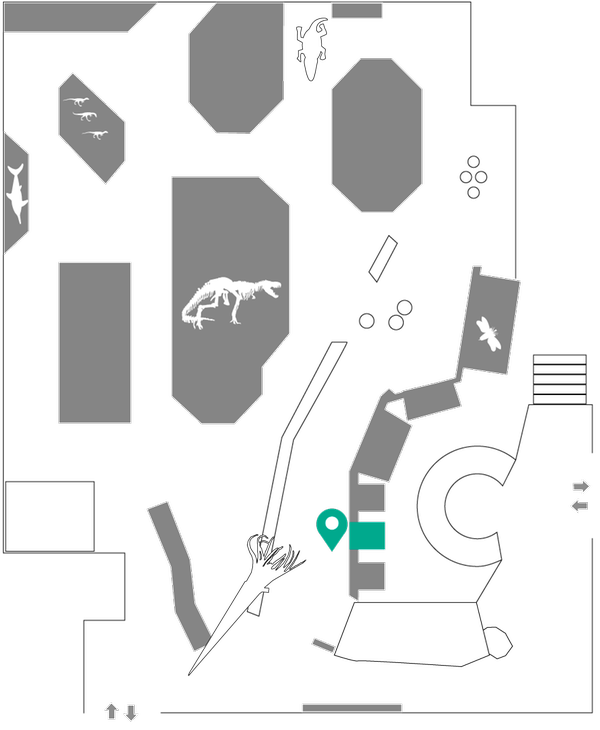
Silurian
443-419 million years ago
The first vascular plants evolve, ancestors of nearly all modern land plants. The first animals to go up on land also evolves. The biggest news in the oceans is the evolution of fish with jaws and teeth instead of a simple hole for a mouth.
This is where you'll find the Silurian period when you are in the exhibition.
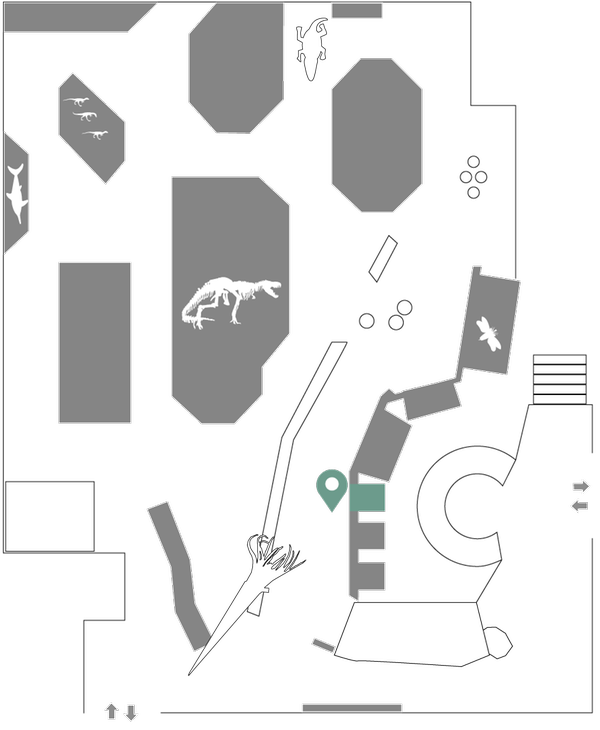
Devonian
419-359 million years ago
Nearly all the fish that are ancestors of modern fish species now evolve. Amphibians, the first four-footed animals also evolves. These amphibians are the original ancestors of all land-dwelling vertebrate animals. Plants spreads out widely on land, and a new type of reproductive organ evolves – the seed.
This is where you'll find the Devionian period when you are in the exhibition.
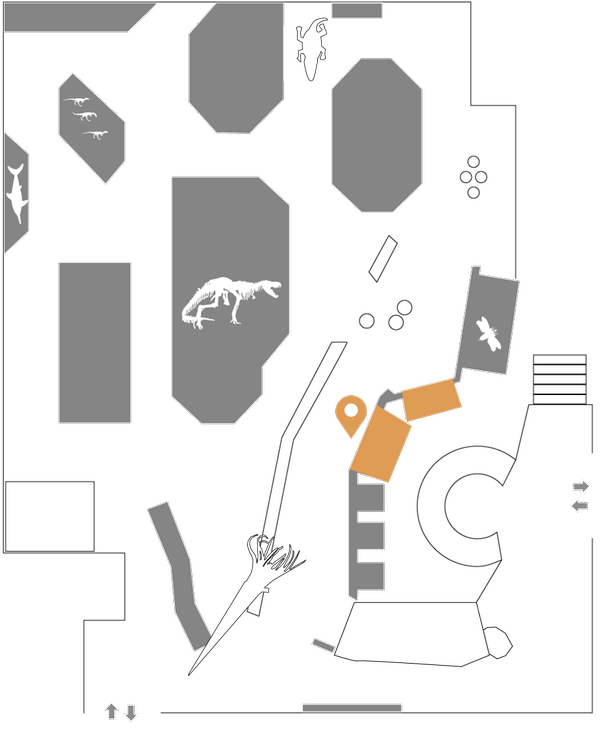
Carboniferous
359-299 million years ago
The first flying animals appeares. They are insects, and some of them are very large. Vertebrate animals develop eggs with protective membranes, which is by far the most important adaptation to life on land. Another significant evolutionary step is the emergence of the first forests, with giant trees.
This is where you'll find the Carboniferous period when you are in the exhibition.
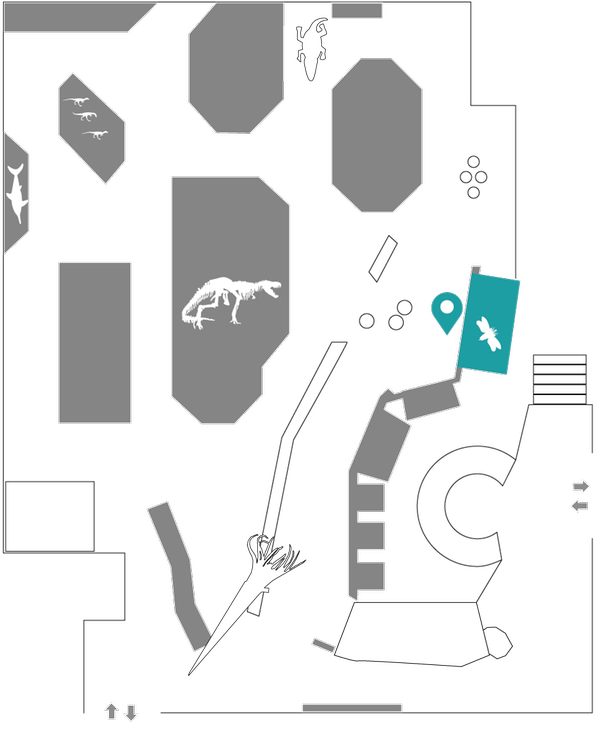
Permian
299-252 million years ago
Seed plants become more widespread, and ferns loose ground. Several new groups of reptiles appear. Amphibians become fewer, due to competition from new species and drier climatic conditions. The period ends with the most extensive mass extinction that has thus far occurred on Earth. Life in the ocean is worst affected.
This is where you'll find the Permian period when you are in the exhibition.
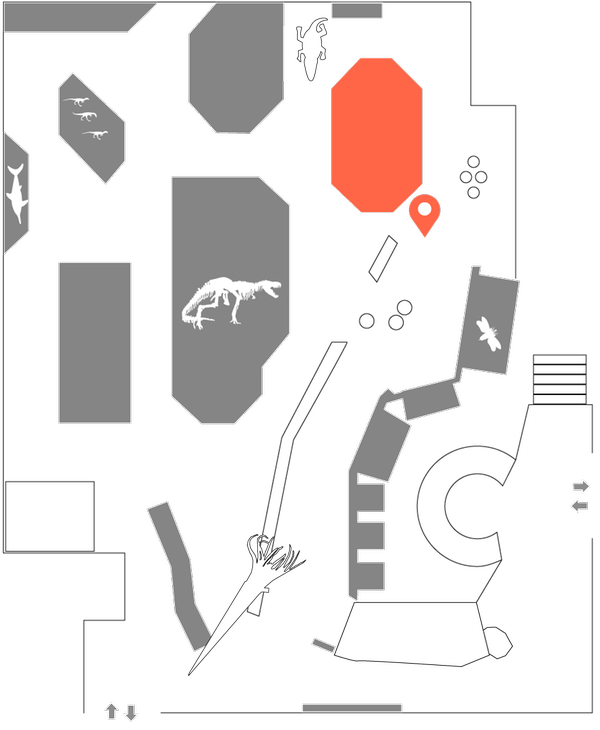
Triassic
252-201 million years ago
What most distinguishes this period is the rapid evolution of reptiles. Swimming in the oceans are the ancestors of ichthyosaurs and plesiosaurs, while the earliest crocodiles lives in fresh water. In the skies the pterosaurs are flying, and on land the first dinosaurs appear. The ancestors of mammals now evolve.
This is where you'll find the Triassic period when you are in the exhibition.
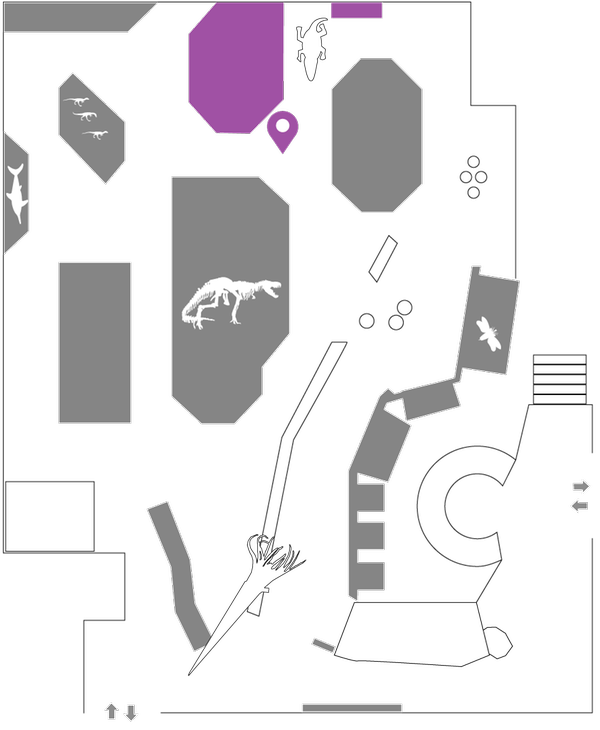
Jurassic
201-145 million years ago
During the Jurassic birds evolve and insects begin to pollinate plants. Dinosaur species now vary widely in shapes, sizes and appearance, and the first mammals begin to evolve. All of these evolutionary developments are decisive for the way our world looks today, with all the mammals, the birds in the air and insects, the animal group with the greatest number of species.
This is where you'll find the Jurassic period when you are in the exhibition.
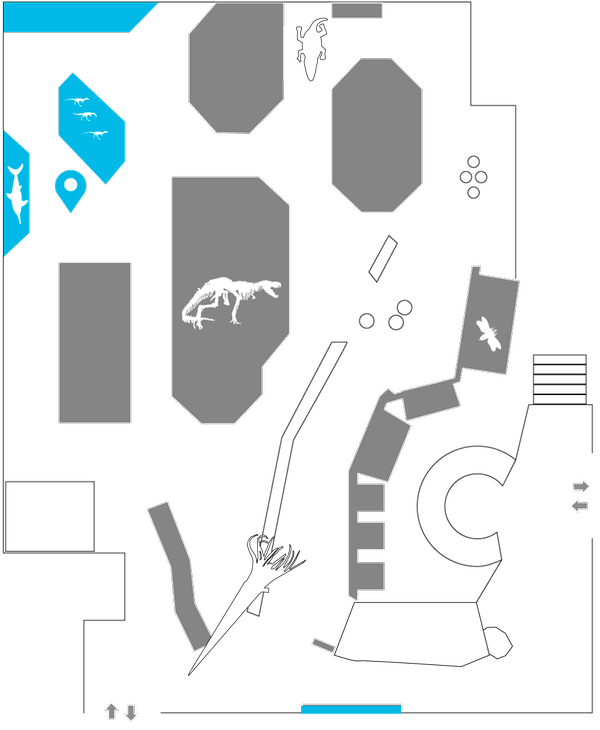
Cretaceous
145-66 million years ago
On land the flowering plants develop rapidly. The meat-eating dinosaurs becomes the largest land-dwelling predators that have ever existed. In the oceans snails, sea urchins and mussels experience a great increase in species diversity. New, efficient predators also evolves – crustaceans with powerful claws, mosasaurs and bony fish. But at the end of the period, three fourths of all plants and animals on Earth dies out.
This is where you'll find the Cretaceous period when you are in the exhibition.
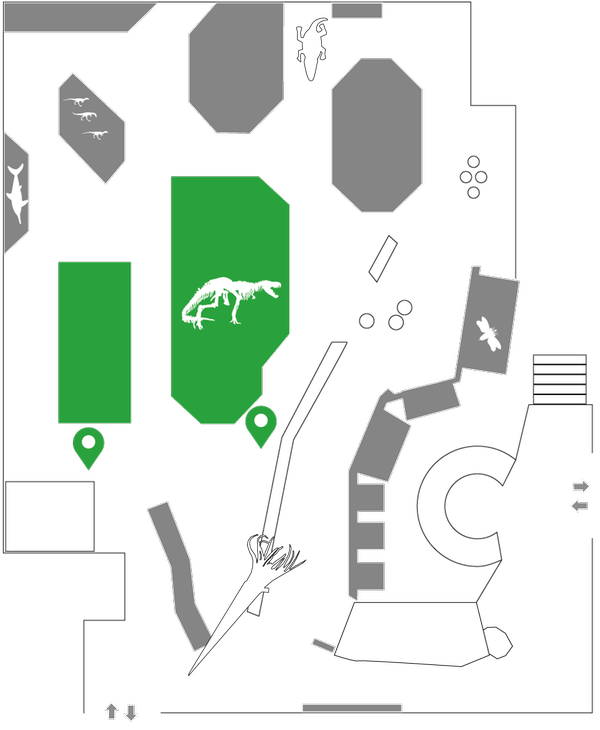
Paleogene and Neogene
66-2.6 million years ago
The Paleogene Period lasts from 66 to 23 million years ago, and the subsequent Neogene Period continues until the great ice ages begin, 2.6 million years ago. Nearly all the plants and animals found today on Earth now evolves. But the distribution of plant and animal species are often quite different from today, with, for example, palms in the Arctic and crocodiles in Canada’s far north.
This is where you'll find the Paleogene and the Neogene periods when you are in the exhibition.
